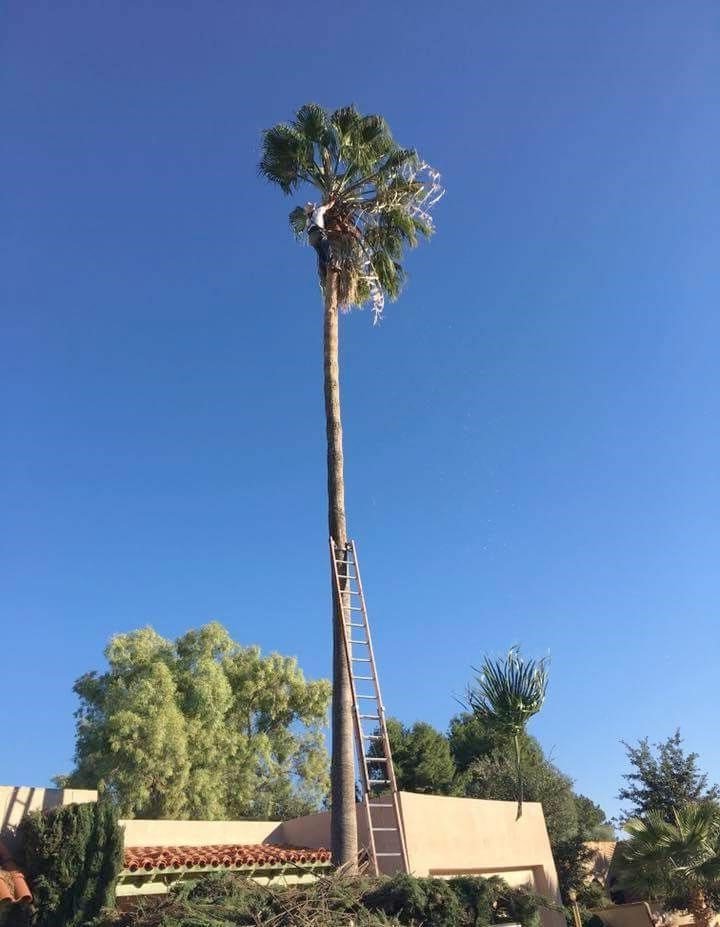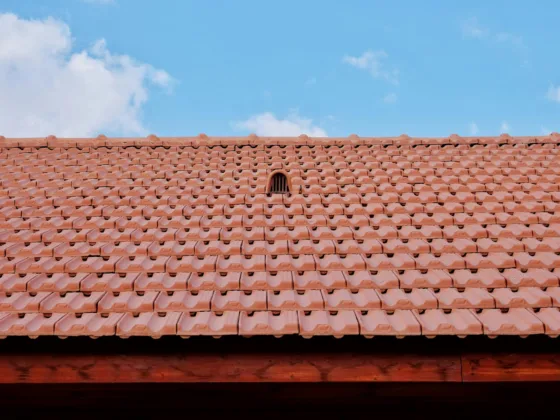Table of Contents Show
Palm trees are beautiful, but they can be hard to maintain. They require a lot of water and sunlight in order to grow, which is often difficult when you live in a city with lots of buildings around that block out light.
Many people decide to get rid of their palm trees for this reason. But before you do so, there are some things you should know about removing them!
This post will go over why it’s important not to remove your palm tree without knowing all the facts first and what steps need to be taken when removing these plants from your property.

What You Need to Know Before Removing Palm Trees
Dead Fonds Protect the Palm Trees
During the cold season, the leaves fall off palm trees, creating a blanket around the trunk that protects it from frostbite. The dead palms also help to insulate and protect the living parts of your tree during every season.
Dead Fonds is a Fire Hazard
During hot months, dead palms dry up and become a fire hazard. If you have palm trees, make sure to cut them down before they can cause any damage! Avoid having them lying around your property where they can become a spark and start a fire that could burn down your house or business.
Read Also:
Palm Roots Are Deep and Tough
The roots of your average palm tree run about 18 feet into the ground with a rigidity that is unparalleled by most other plants in this area. It’s going to take some serious equipment to get your palm tree out of the ground.
These are just some of the reasons why it’s important not to remove palm trees without knowing all the facts first! If you’re thinking about removing these beautiful plants from your yard, make sure to follow our guide below so you know exactly what you need to do.
Cost to Remove Palm Trees
The cost to cut down a palm tree will depend on the size of the palm, the company you use, and the time of year you do it. Winter is always a cheaper time to remove a palm tree as tree service is a seasonal industry and is always cheaper in winter.
| National Average | 30 – 45ft | $525 |
| Small palm | 15 ft | $250 |
| Medium palm | 30 ft | $475 |
| Large Palm | 45 ft | $750 |
| Huge palm | 75 ft + | $1,420 |
What Steps Should Be Taken When Removing Palm Trees?
Remove The Leaves First
Start by raking up all of the dead palms that have fallen on your property and dispose of them properly, then start cutting down any living or non-living parts on your tree that may still pose a risk for fire (such as dried up palm fronds).
Inspect The Base of Your Tree for Rot and Decay
Next, inspect the roots on your palm to see if they look healthy or not. If you notice any patches that are dark in color, soft to touch or have a foul odor coming from them it’s likely there is some sort of disease affecting this area of your tree.
Kill The Palm Trees with Chemicals
If you do notice some rot or decay, it’s important to cut down these branches and kill them off before they infect other areas of your tree that are not yet affected. After cutting out all diseased parts, treat the area with a fungicide to keep this harmful bacteria from spreading throughout your palm.
Cut Off the Leaves and Top of Your Trees
Next, you’ll need to cut out all dead parts of any living branches that are above where the diseased area was located on your tree. After doing so, use a chemical pesticide sprayer or brush to apply fungicide directly onto the remaining healthy sections of your tree as well.
Lop Off the Top of Your Palm Trees
After you have treated all affected areas, it’s time to lop off the tops of your palm tree. This will keep new growth from occurring that can cause more problems in the future or lead to an infection on parts of your tree you may not be able to see yet.
The process of removing palm trees is not easy, but it has to be done! If you’re thinking about getting rid of your palms in the future make sure to follow this guide for safe removal.
How Are You Going to Remove My Palm Trees?
If you want to remove a full-grown run-of-the-mill palm tree, most companies will use an ax or chainsaw in order to cut down all visible parts of it while staying high off the ground so that they don’t damage any power lines or electric boxes nearby.
Once your palm tree has been fully cut down, they will start to remove the stump by cutting it at ground level and digging out any roots that were not removed in previous steps with a machine called a root grinder.
Once this is complete, you’ll need to push all of the remains into one pile which can then be carted off to the landfill.
A full-grown palm tree takes a lot of time and effort to remove, so it’s not something you want to do on your own!
Why You Should Remove Palm Trees
There comes a time when you should remove palm trees, and that’s when they become a fire hazard.
Palm trees are beautiful plants but their roots can be extremely dangerous if they get into your water supply or electrical wiring which can cause serious damage to both of these things. The only way to prevent this from happening is by removing them yourself before anything bad happens.
Old And Diseased Palms Can Be Risky to Have Around
Palm trees are beautiful, but they need to be taken care of properly in order for them to stay healthy. If you notice any signs of rot or decay on your tree it’s important not to wait until the problem gets worse and spreads throughout more areas than you can handle yourself!
If you want to remove palm trees in the future, make sure to use a professional that you can trust in order to do it right!
During Storms, Tall Palms Can Be Extremely Dangerous
Palm trees are beautiful and majestic to look at, but they can actually pose a great risk for damage during hurricanes or other types of storms. Their flexible trunks and high centers of gravity make them more susceptible than just about any other type of tree you could have in your yard!
During strong winds, palms can bend and sway on a whim which means they can easily fall down and crush anything underneath them. Even if you have your palm trees tied up to sturdy posts, their roots are still extremely powerful and will not be able to stop the trunk from falling over with little warning!
Treatments for Palms During Storms
If there’s a storm coming towards your area, the best thing that you can do is to cover up your palm trees with a tarp in order to shield them from any wind damage. This will help prevent broken trunks and branches which could be extremely dangerous if they fall on top of someone or something!
Don’t Wait Until Disaster Strikes to Treat Your Palm Trees
While there’s no way to predict what will happen with the weather, you can take proactive steps toward protecting your palms from any potential damage. If you know that a storm is coming through town or other types of harsh weather are headed in your direction it’s best to start treating for diseases and infestations as soon as possible.
Palm trees are beautiful, but they have the potential to become dangerous if left untreated for too long. If you would like more information on how to care for your palms or other types of palm tree removal in the future make sure that you contact a professional today!









